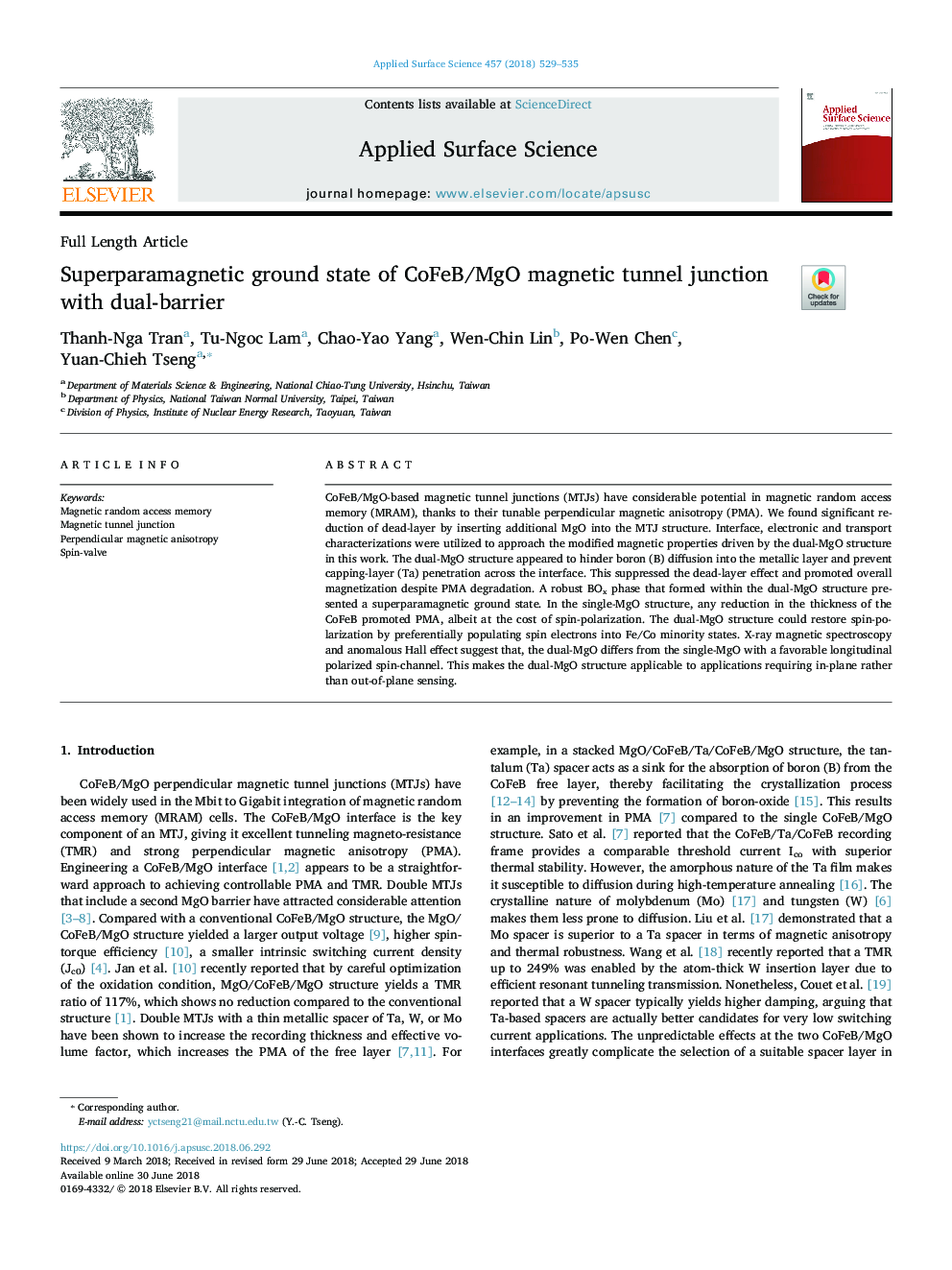| Article ID | Journal | Published Year | Pages | File Type |
|---|---|---|---|---|
| 7833034 | Applied Surface Science | 2018 | 7 Pages |
Abstract
CoFeB/MgO-based magnetic tunnel junctions (MTJs) have considerable potential in magnetic random access memory (MRAM), thanks to their tunable perpendicular magnetic anisotropy (PMA). We found significant reduction of dead-layer by inserting additional MgO into the MTJ structure. Interface, electronic and transport characterizations were utilized to approach the modified magnetic properties driven by the dual-MgO structure in this work. The dual-MgO structure appeared to hinder boron (B) diffusion into the metallic layer and prevent capping-layer (Ta) penetration across the interface. This suppressed the dead-layer effect and promoted overall magnetization despite PMA degradation. A robust BOx phase that formed within the dual-MgO structure presented a superparamagnetic ground state. In the single-MgO structure, any reduction in the thickness of the CoFeB promoted PMA, albeit at the cost of spin-polarization. The dual-MgO structure could restore spin-polarization by preferentially populating spin electrons into Fe/Co minority states. X-ray magnetic spectroscopy and anomalous Hall effect suggest that, the dual-MgO differs from the single-MgO with a favorable longitudinal polarized spin-channel. This makes the dual-MgO structure applicable to applications requiring in-plane rather than out-of-plane sensing.
Keywords
Related Topics
Physical Sciences and Engineering
Chemistry
Physical and Theoretical Chemistry
Authors
Thanh-Nga Tran, Tu-Ngoc Lam, Chao-Yao Yang, Wen-Chin Lin, Po-Wen Chen, Yuan-Chieh Tseng,
